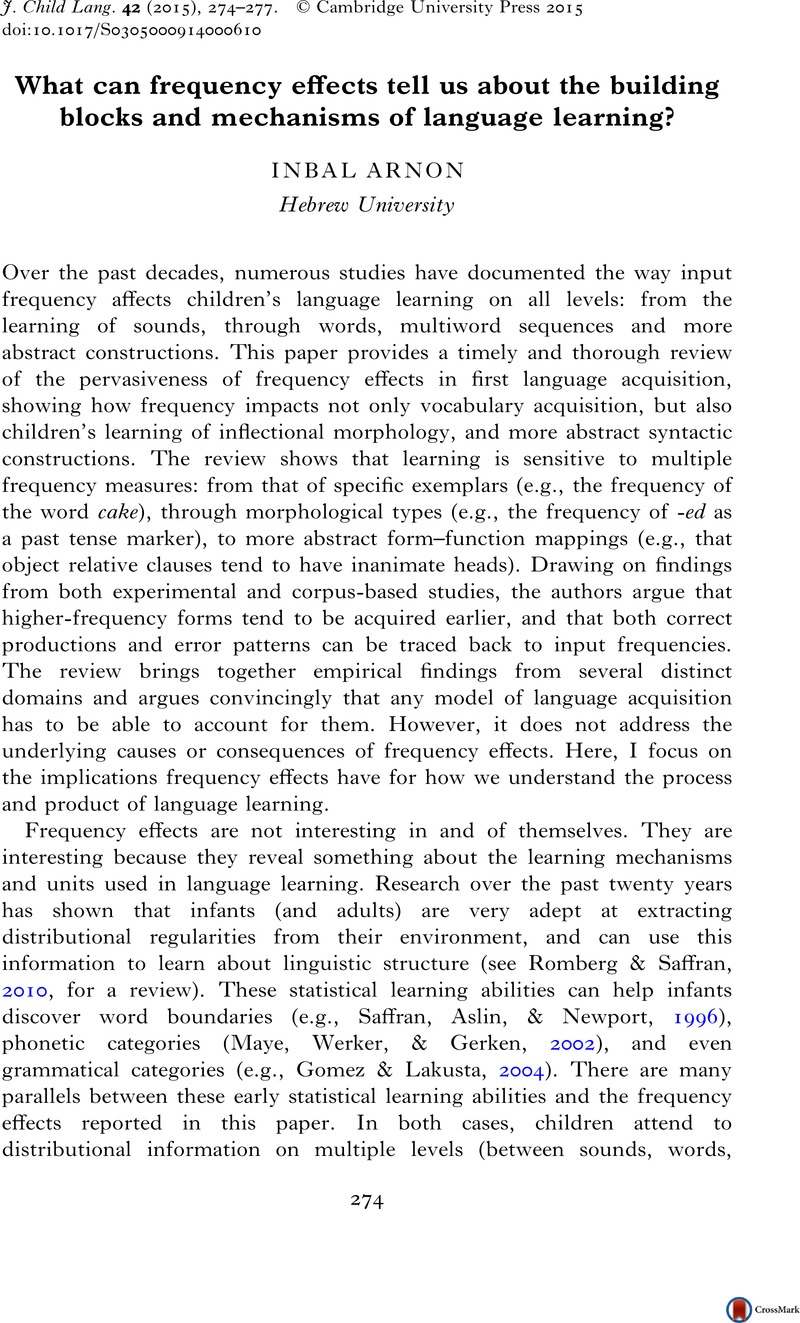Crossref Citations
This article has been cited by the following publications. This list is generated based on data provided by Crossref.
HAVRON, NAOMI
and
ARNON, INBAL
2017.
Minding the gaps: literacy enhances lexical segmentation in children learning to read.
Journal of Child Language,
Vol. 44,
Issue. 6,
p.
1516.
Rastelli, Stefano
2019.
The discontinuity model: Statistical and grammatical learning in adult second-language acquisition.
Language Acquisition,
Vol. 26,
Issue. 4,
p.
387.
Supasiraprapa, Sarut
2019.
Frequency effects on first and second language compositional phrase comprehension and production.
Applied Psycholinguistics,
Vol. 40,
Issue. 4,
p.
987.
HAVRON, Naomi
and
ARNON, Inbal
2021.
Starting Big: The Effect of Unit Size on Language Learning in Children and Adults.
Journal of Child Language,
Vol. 48,
Issue. 2,
p.
244.
Cowley, Stephen J.
and
Gahrn-Andersen, Rasmus
2022.
Simplexifying: harnessing the power of enlanguaged cognition.
Chinese Semiotic Studies,
Vol. 18,
Issue. 1,
p.
97.
Gambi, Chiara
and
Messenger, Katherine
2023.
The Role of Prediction Error in 4-Year-Olds’ Learning of English Direct Object Datives.
Languages,
Vol. 8,
Issue. 4,
p.
276.
Keogh, Aislinn
Kirby, Simon
and
Culbertson, Jennifer
2024.
Predictability and Variation in Language Are Differentially Affected by Learning and Production.
Cognitive Science,
Vol. 48,
Issue. 4,


